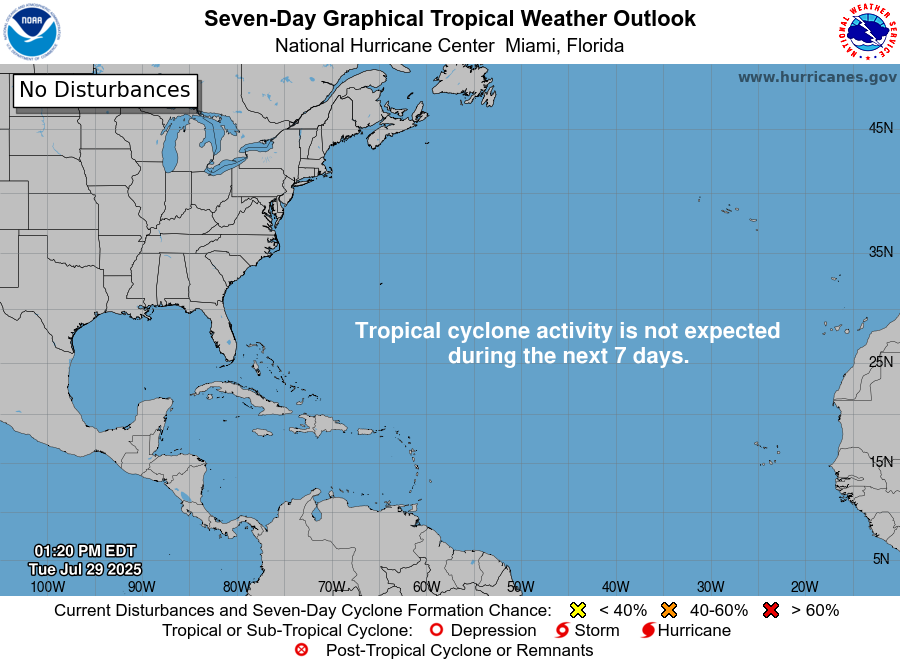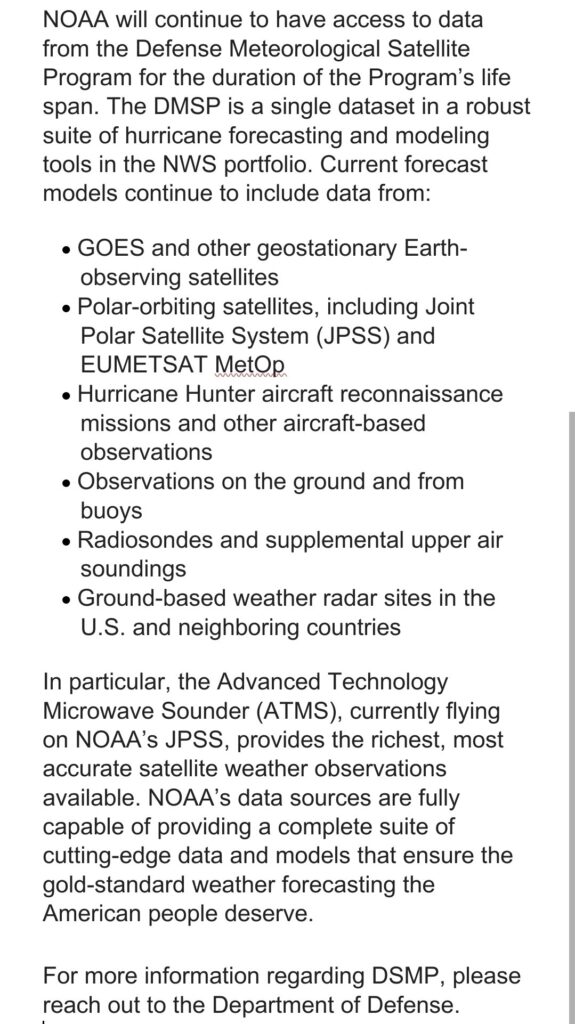In brief: The tropics are busier but lack teeth right now in the Atlantic. A critical hurricane forecasting and observation tool received a permanent stay of execution today. And perhaps there is a sign of a reduced pace of significant weather across the country as August begins.
Tropical Atlantic amuse-bouche
We continue with a quiet tropics today with no immediate or credible threats of note across the Atlantic.
We’ve got a rather beefy tropical wave off the west coast of Africa today, but it’s not organized, nor is it expected to really organize over the next few days.
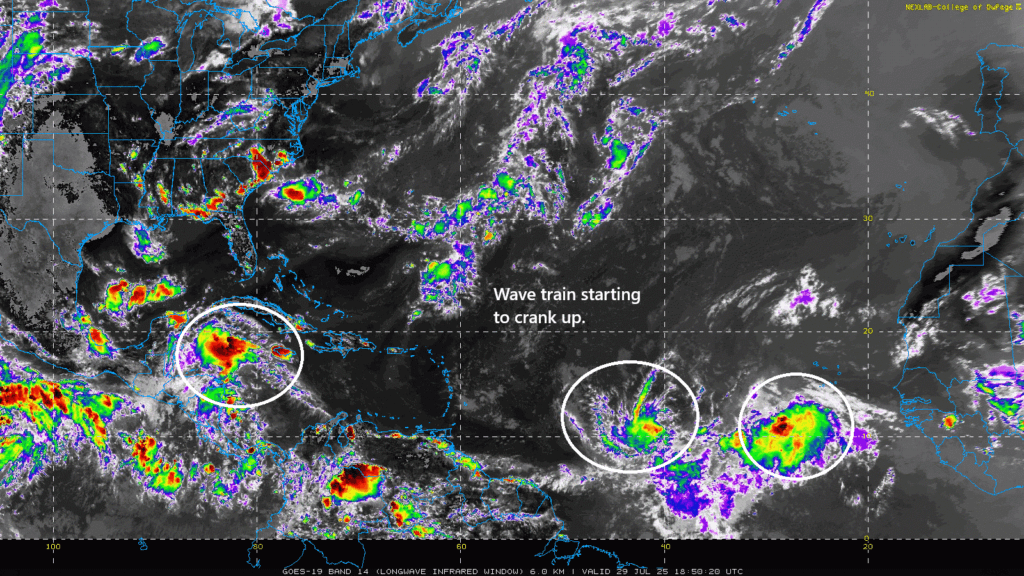
We’ve also got a wave over the central Atlantic, again, not expected to organize. There’s a really solid area of thunderstorms in the western Caribbean, but that will soon move over land.
We continue to see signs, hints, possibilities, etc. that we’ll end up with some action off the Southeast coast in about 5 to 7 days, but I think because there’s not any real consistency to this or any real sign of significant possible development that we don’t see any risks drawn today.
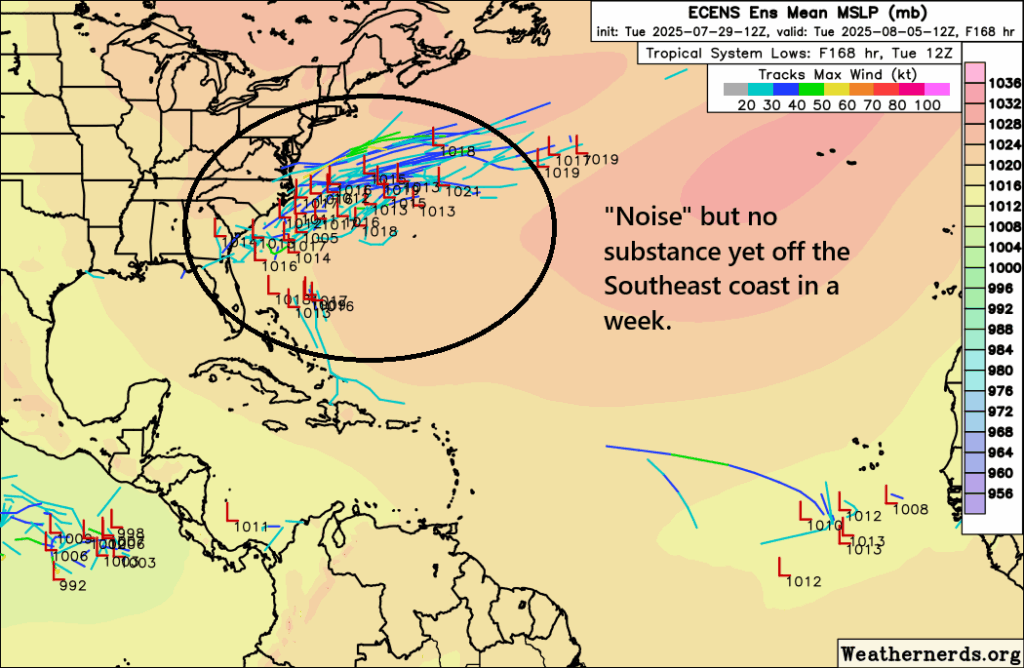
So for now, we will just watch and see if anything can get going, but at this rate, it still feels very much like the amuse-bouche to an active period more than the start of an active period itself.
Hurricane tools get a stay of execution
We received some good news today. Per NOAA, the SSMIS microwave satellite imagery that has been a bone of contention over the last couple months, threatened to be pulled due to cybersecurity risks was given a permanent stay of execution today.
John Morales, who has been a critical voice over the last few months in pushing back on the lost funding and cuts to NOAA first alerted us of this. It was later confirmed by Michael Lowry, yet another critical voice in all this as well.
Why does this matter? The SSMIS data is far and away the best data available for understanding and validating traditional satellite imagery when it comes to monitoring tropical systems. It provides added lead time on rapid intensification episodes and allows for better estimates of initial positions of these systems, which is an absolutely critical input to weather models for prediction of future track and intensity. Without this data, we would have been in a not so good place, pending a suitable replacement.
There are a few ways to look at this. First, this is not a victory. Let’s be blunt about this: For the last 7 months, NOAA and the NWS have been governed by seat-of-the-pants decision-making by the Commerce Department and the Trump Administration. It’s been pure chaos. This isn’t a partisan statement; it reflects the reality on the ground. If this were a business, the CEO would have been run out of town by now. (Now, that may be a partisan statement to some extent) It’s no way to run the premier weather science agency on the planet, and it’s been a disgrace to watch, truthfully. People were fired, then they weren’t, then they were. We had satellite data, then we didn’t, now we do again. There was a hiring freeze, and now there isn’t one. The Administration wants to gut funding to NOAA research, critical weather and climate research, and Congress has told them no. It takes forever for the Commerce Department to sign off on almost any expenditures which has led to data lapses. This doesn’t even factor in the absurd handling of FEMA so far this year. The chaos is unsustainable, and it needs to stop. The public servants at NOAA deserve better, and so do the American people.
Second, this is also an issue that NOAA should have probably identified and rectified by now. These satellites run by the Department of Defense are 15 years past their 5-year design life. That’s a long time. We probably should have had a viable alternative in the skies already. Hindsight is 20/20, of course, right? It’s easy to sit here and say coulda, woulda, shoulda. And it’s even easier to get funding for these things, right? No, of course not. But the reality is that if something has a design life of 5 years and it’s on year 20, you probably are on borrowed time. Maybe in year 10 or 15 it would have been wise to get the ball rolling on this stuff for replacement. But here we are.
Last, it does ultimately beg the question of why the decision was made a.) so abruptly to terminate the data (DoD gave literally just a few days’ notice back in June the first time), and b.) to rescind that decision if there is a valid cybersecurity risk? Was the risk not that serious? Is this a basic cost-benefit situation where the risk of losing the weather data operationally is greater than the cybersecurity risk? I don’t know if we’ll ever know, but it certainly doesn’t reflect well on the “most transparent administration in history.”
A calmer period?
Last, let’s close with (hopefully) some good news. I believe today is the 38th day in a row with at least a slight risk (2/4) of excessive rainfall and flooding risks somewhere in the Continental United States.
That’s a painfully impressive streak. I don’t think it’s yet the record, but it’s been rough. We’ve got 4 more days of this ahead of us at least. We’re not into quieter weather yet. Flooding risks will continue. Heat will continue. But ultimately, we will see quieter weather emerge. In fact, the day 3 to 7 outlook for hazardous weather is slowly losing areas of interest and coverage.
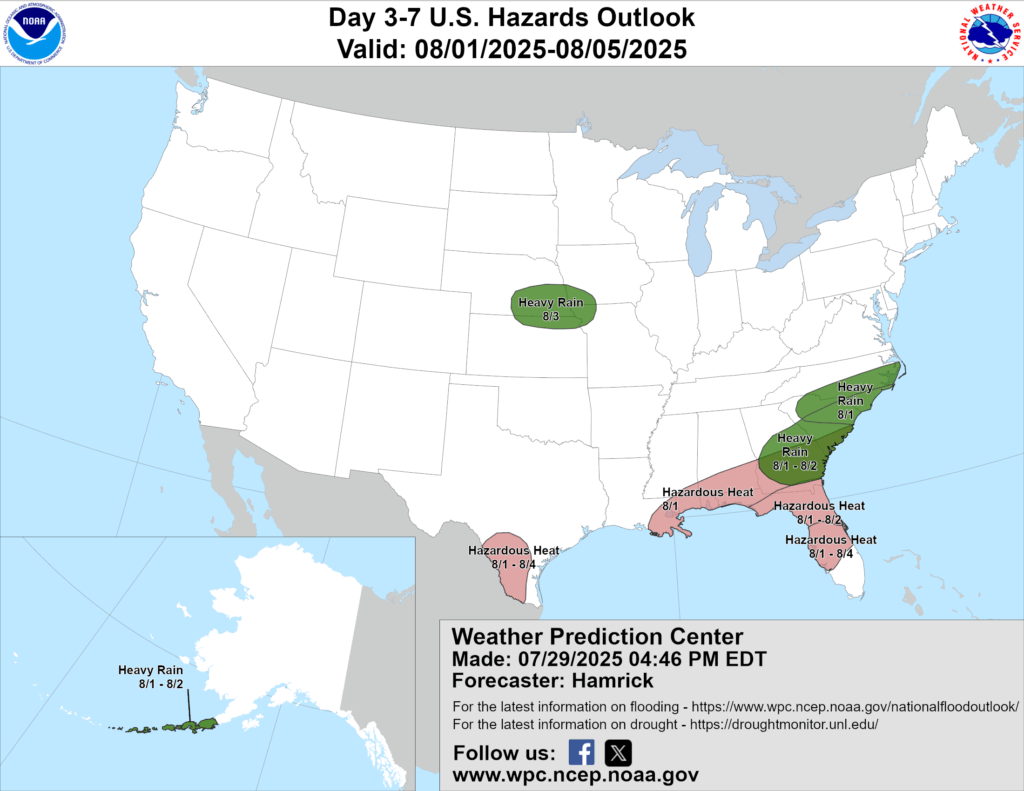
Quieter weather doesn’t necessarily mean quiet weather. But hopefully things will calm to a pace that is slightly more manageable.
